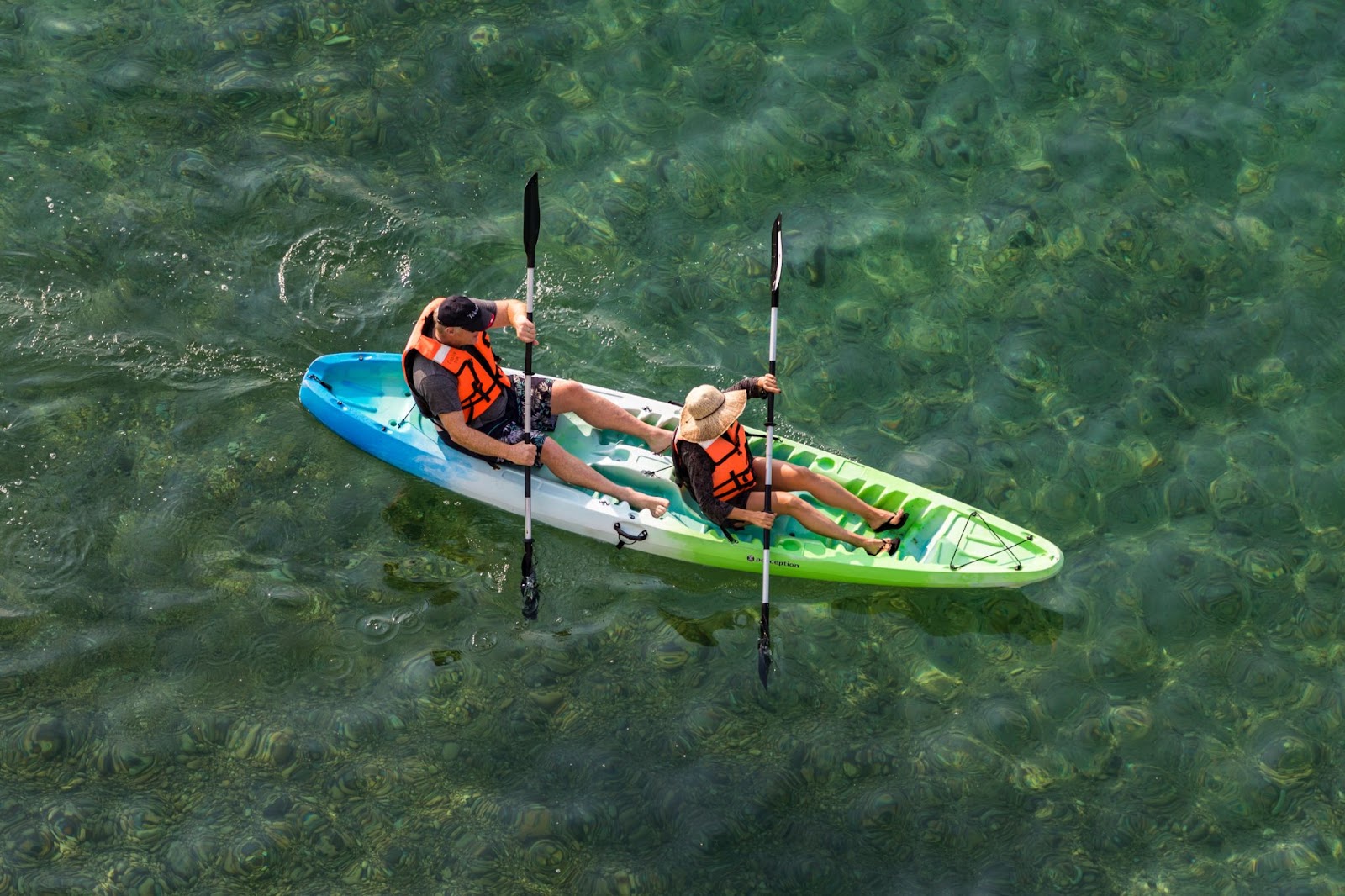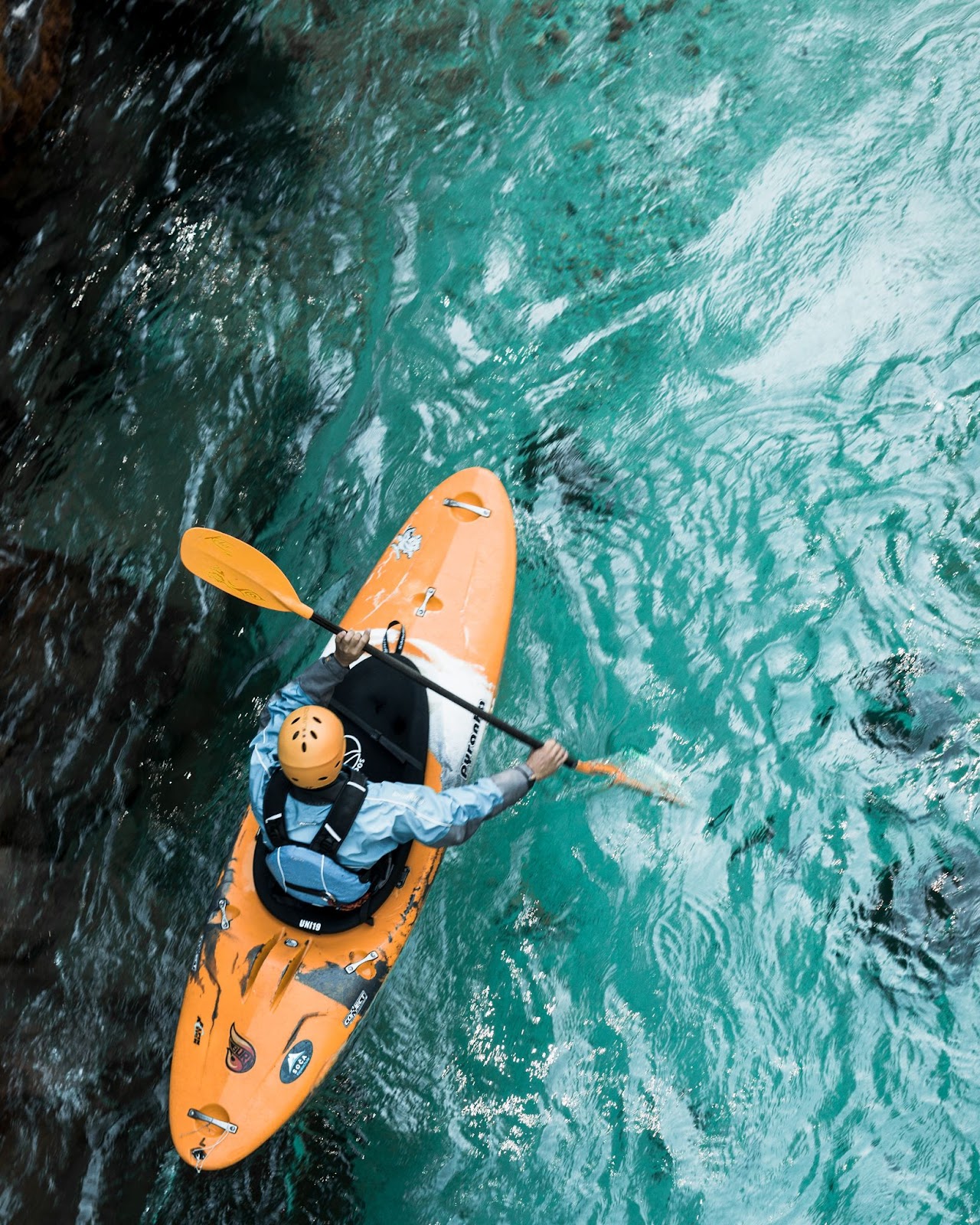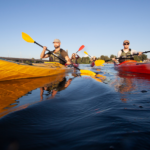Safety Considerations
When planning for an enjoyable and safe kayaking experience, it’s important to think about the environment, weather conditions and personal safety. To keep you dry and comfortable, appropriate clothing is an essential part of your kayaking gear. Here are a few considerations when selecting the best clothing for your kayaking adventure:
Temperature – Choose materials that will wick away moisture to keep you warm when temperatures drop. Synthetic or wool fabrics are ideal as they will help regulate your body temperature and allow you to layer up without becoming too bulky. Don’t forget to bring along a warm hat, gloves, and waterproof outerwear if necessary.
UV Protection – Sun exposure can be intense while out on the water, so opt for long-sleeved shirts made of UPF-rated fabric (rating higher than 15 is recommended). A wide-brimmed sun hat and sunglasses with polarized lenses can also help protect you from glare while making it easier to spot obstacles in the water.
Footwear – Your feet should be protected from sharp objects in case you capsize or have to walk over rocks during your excursion – be sure to wear shoes with a good grip sole that won’t slip when wet. Neoprene socks and boots work best in colder waters or winter months, while sandals or lightweight boats shoes are better suited for warmer climates.
What to Wear When Going Kayaking
When it comes to choosing the right clothing to wear when going kayaking, there are many factors that will influence your decision. Clothing should be chosen with safety, comfort, and convenience in mind.
First, consider water temperature; if it’s cold you may want to look at purchasing items such as a wetsuit or drysuit. Additionally, depending on the type of kayaking you enjoy – or the type of waters you plan on exploring – you might also want to consider paddling gloves and/or shoes, a sun hat or brimmed cap that won’t blow away in the wind, and a lightweight jacket. Consider what layers of clothing would be best for you as well – whether it’s a thin fleece layer or cotton jersey knit. Paddling in cold temperatures usually requires synthetic fabrics (not cotton) close against your skin for warmth and easy movement – mix and match depending on weather conditions. And for those bright days on the water, don’t forget sunscreen! Layering properly for kayaking is essential for comfort and safety.
What to Wear on Your Top Half
Having the right clothes on your top half can make a huge difference when you’re out kayaking. What you wear will ultimately depend on the weather and water temperature, but there are a few items that should be standard for any kayaking trip.
A rash guard is always a good idea if you’re going to be spending any time in the sun and will protect against sunburns, as well as rash that can come from contact with wet surfaces. A long-sleeve rash guard provides even better sun protection and will keep you warm in cooler temperatures. Layering with a light synthetic shirt under your rash guard is also a great idea, especially in cold weather. You should also consider wearing a waterproof jacket or windbreaker. Even on otherwise warm days, a sudden gust of wind can chill you quickly so it’s important to have something protective to block the wind and rain during those unexpected moments of bad weather. Another layer such as sweatshirt or synthetic base layers are also essential for warmth and comfort throughout your kayaking session. Be sure to choose items with quick-drying fabric; cotton takes too long to dry so it’s best avoided in wet environments like this one!
What to Wear on Your Bottom Half
If you’re going kayaking in colder weather, wearing two layers can help keep you warm. Start by putting on a fast-drying pair of athletic shorts or quick-drying pants. This will provide insulation while also quickly drying if it gets wet. You may want to put on a rash guard or a wet suit over the shorts or pants for extra warmth, as well as providing UV protection. It’s important that whatever layer is closest to your skin is both comfortable and breathable; try looking for clothing made with synthetic fabrics, such as polyester or nylon, which will wick away sweat and are quick-drying. For added protection from chillier water temperatures, opt for leggings with extra layers or windproof pants. If it’s very warm out and you don’t need additional warmth, opt for lightweight shorts and no shirt at all. Don’t forget shoes; water shoes (or neoprene booties) should keep your feet mildly protected from the elements while also being flexible enough to allow movement when paddling through rough waters.

Footwear For Kayaking
When it comes to finding the right footwear for kayaking, there are several important considerations. The first priority is keeping your feet comfortable and safe. The right type of shoes should provide optimal cushioning and traction, while still allowing your feet to breathe and letting water drain away quickly. The next consideration is choosing shoes that fit with the type of kayak you’re using. Open-toed sandals are great for recreational sit-on-top kayaks, which usually don’t require you to move around in the boat too much as you paddle. For whitewater or sea kayaking, closed-toed shoes such as water shoes or neoprene booties are generally recommended due to their superior protection from potential hazards like sharp rocks and debris.
Last but not least, it’s a good idea to choose shoes that can quickly dry after being submerged in water — this will help keep your feet warm in cold temperatures and prevent blisters caused by wet socks rubbing against your skin as you paddle. Additionally, look for shoes with adequate grip on the outsoles; some manufacturers offer special rubber outsoles specifically designed for use on wet surfaces like a kayak deck or riverbed. With these tips in mind, you’re sure to find the perfect footwear for your next kayaking adventure!
Accessories For Kayaking
In addition to the necessary safety gear, it’s important to dress appropriately for a kayaking adventure. Although the temperature of the water in many bodies of water can often also determine what you wear, there are several must-have items for any kayaking adventure regardless of your destination and time of year. Footwear: Waterproof sandals or old tennis shoes are popular choices for kayakers, but they may not provide the most comfortable option. Neoprene booties designed with neoprene tops and canvas bottoms can provide warmth, comfort and protection from sharp rocks and debris in the water. For colder situations you may want to invest in a pair of drysuit boots that are usually made out of neoprene and provide more protection against cold waters.
Headwear: Straw hats with wide brims are perfect for hot days when sun protection is necessary while providing ventilation and allowing access to your face while looking around at your surroundings. For cooler weather consider wearing a knit skull cap or a warm stocking type hat depending on the temperature outside. If you’re planning on paddling in an area that’s prone to rain, then make sure to bring along some kind of waterproof wide-brimmed hat or cap that will fit over your wetsuit hood if necessary. Gloves/Manicure Supplies: Although not essential if it’s warm enough, gloves will help keep your hands warm and protect them from blisters when pulling hard on the paddle in rough conditions such as white water paddling or even sometimes just during long-distance open flatwater trips. Manicure supplies such as nail clippers, an emery board and clippers can give you some much needed finger TLC after one too many days on the water without proper care!
Layering Clothes For Kayaking
Layering clothes for kayaking is an important part of ensuring that you stay comfortable during your time on the water. Kayaking in cold temperatures and unpredictable weather can bring a number of challenges, so it’s important to be prepared with the right clothing for your activity. When layering for a kayaking adventure, start with a base layer wicking material that keeps moisture away from your body. Next, add an insulating layer such as a fleece or wool sweater to trap warmth close to your body and protect against wind and water. Depending on the time of year and the temperature, consider adding a third last layer such as a waterproof jacket or pants as needed. Be sure to select materials with breathability and comfort in mind so you don’t overheat while paddling or catch a chill if paddling in colder temperatures. Here are some other suggested items you may want to consider when assembling your kayaking wardrobe:
-A raincoat or waterproof jacket: Remember you may encounter wet conditions while out on the water! Look for one that’s lightweight but durable.
-Tights: Thicker than regular leggings, tights provide insulation and full coverage against cold air entering through the legs–those paddle strokes can really cool you down!
-Hat & Sunglasses: To protect your face from UV rays, select items with UVA/UVB protection!.
-Footwear: Consider shoes that are comfortable and lightweight so they won’t drag in the water unnecessarily add resistance! Neoprene booties provide added warmth, traction, and protection when transitioning from deck to shore.
Tips For Staying Comfortable While Kayaking
When you go kayaking, getting the right clothing is essential to staying comfortable in the elements. The type and style of clothing you choose will depend on where you are going and the expected temperature and weather conditions. In general, when you go kayaking, it is best to avoid cotton fabrics — they can become very heavy when wet and often provide little or no insulation from the wind or cold water. Synthetic materials are ideal for active use as they wick moisture away from the skin and help keep your body warm in cool air or water temperatures. A snug fit will provide more comfort. Choose a jacket with a hood that can be tucked away when not needed, plus a pair of insulated waterproof pants with sealed seams if necessary. Footwear should have good treads for grip on slippery surfaces and keep your feet well protected while providing insulation against variations in temperature, such as when entering cold water from warm areas like beach sand or decks of boats. You may also want to bring along a couple pairs of thin synthetic socks that can be worn under thicker woolen socks for added warmth if necessary.

Additionally, wearing layers is important for comfort no matter what type of garment material you choose — long underwear under shorts or layer shirts under jackets are both great ways to add insulation so that slight shifts in temperature won’t leave you feeling chilled or uncomfortable. Remember: When choosing kayaking apparel, consider the weather conditions anticipated but also plan for them to change during your excursion!




No Comment! Be the first one.